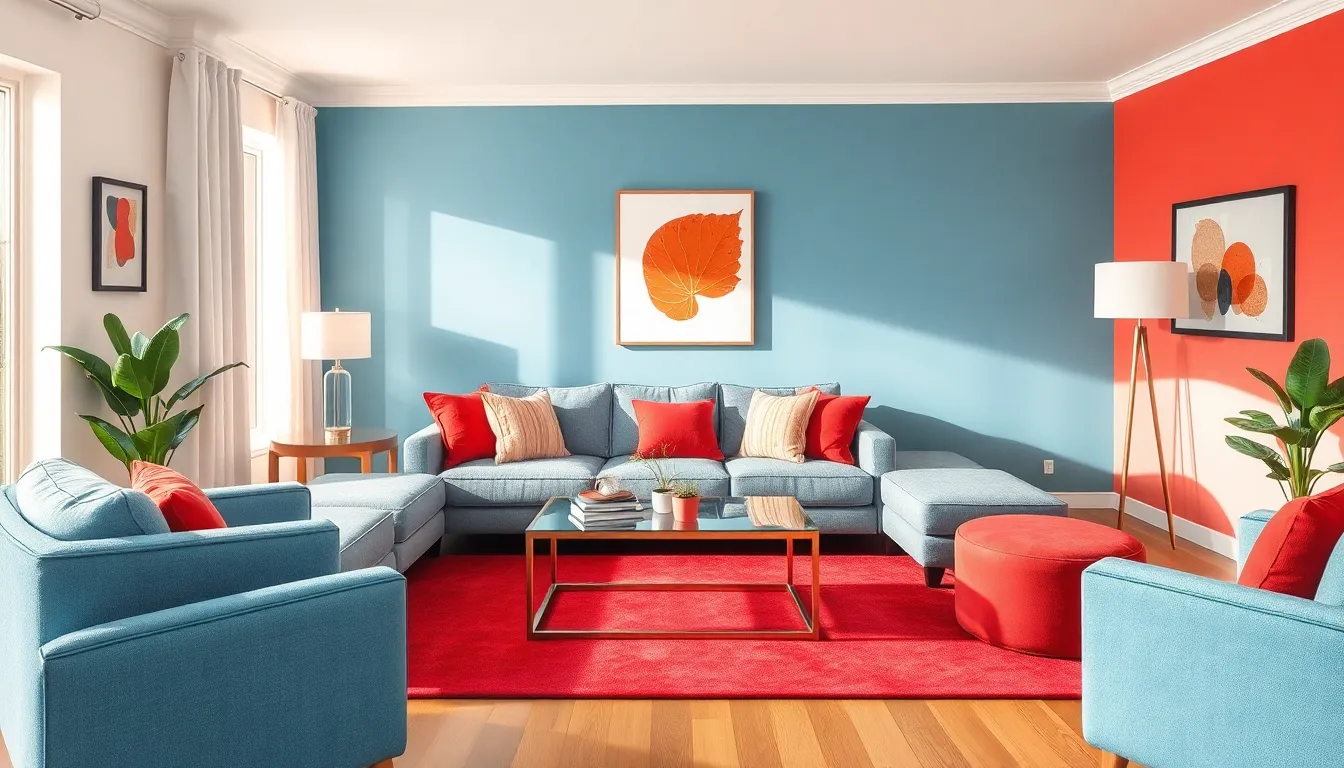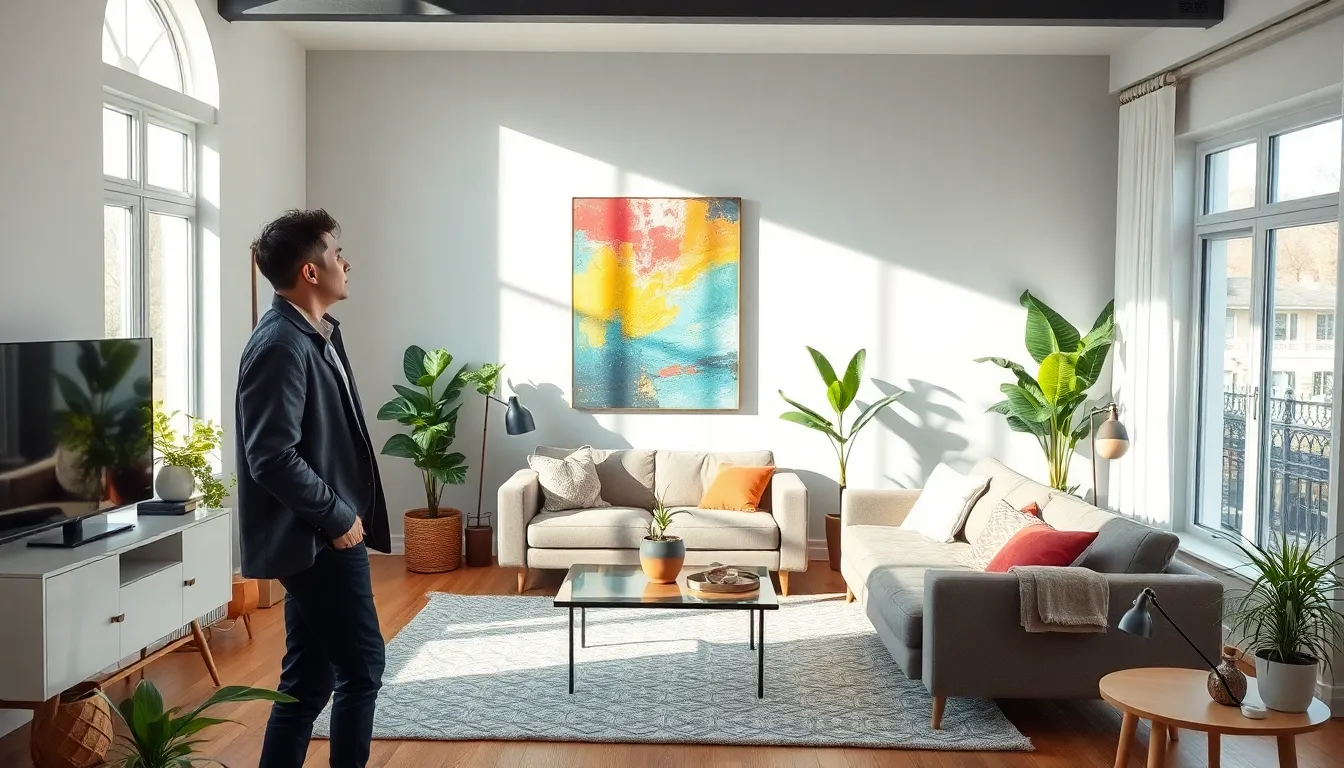Table of Contents
ToggleWhen it comes to transforming a space, interior design concepts can feel like a magical toolbox filled with endless possibilities. Imagine walking into a room that feels like a cozy hug or a vibrant burst of inspiration. It’s not just about choosing the right color palette or trendy furniture; it’s about creating an experience that resonates with who you are.
In a world where first impressions matter, why settle for ordinary? Whether you’re a minimalist at heart or a maximalist ready to embrace the chaos, understanding these concepts can elevate any space from drab to fab. So grab your favorite beverage and get ready to dive into the delightful realm of interior design, where creativity knows no bounds and every room tells a story.
Overview Of Interior Design Concepts
Interior design concepts encompass various styles and elements that shape a space’s ambiance and functionality. Designers consider aesthetics, ergonomics, and the client’s lifestyle when crafting a space that fulfills specific needs. Popular concepts include minimalism, characterized by clean lines and simplicity, and maximalism, which embraces bold colors and diverse textures.
Focusing on functionality often leads to the incorporation of open floor plans. This layout promotes spaciousness and encourages social interaction. Sustainable design principles play a crucial role, utilizing eco-friendly materials and energy-efficient solutions to create healthier environments. Biophilic design integrates natural elements, like plants and daylight, enhancing well-being and productivity.
Eclectic design combines different styles and periods, allowing for personal expression and creativity. Traditional and contemporary styles can coexist, resulting in unique, personalized spaces. Scandinavian design emphasizes simplicity, minimalism, and natural materials, creating calm and serene atmospheres.
Color theory in interior design influences mood and perception within spaces. Warm colors evoke feelings of comfort, while cool colors promote tranquility. Lighting choices also impact how a design concept manifests, with natural and artificial light playing significant roles.
Overall, understanding these concepts provides a solid foundation for anyone looking to enhance their space. Each approach offers distinct benefits, ensuring every room reflects individual goals and preferences.
Key Elements Of Interior Design

Understanding key elements shapes effective interior design. Designers focus on aspects such as color theory and space planning to enhance functionality and aesthetics.
Color Theory
Color theory plays a vital role in creating desired moods. Each color influences emotions; for instance, blue promotes tranquility, while red stimulates energy. Choosing a well-balanced color palette enhances a room’s aesthetic. Designers often use the color wheel to explore complementary shades, ensuring harmonious combinations. Light colors can make small spaces appear larger, while darker hues offer warmth and intimacy. Integrating accent colors further emphasizes focal points within a design. Utilizing cool and warm tones strategically creates depth and balance, fostering a cohesive environment that resonates with individual preferences.
Space Planning
Space planning involves the strategic arrangement of furniture and elements for optimal functionality. Effective space planning considers traffic flow, ensuring easy movement throughout a room. Designers assess both spatial dimensions and the purpose of each area, maximizing utility. Open floor plans encourage interaction and connectivity, making spaces feel more expansive. Zoning different areas with distinct functionalities enhances organization, creating a seamless transition between spaces. Properly scaled furniture contributes to visual balance, while ensuring accessibility for all users. Thoughtful placement of elements supports comfort, enhancing the overall experience within each environment.
Different Styles Of Interior Design
Interior design encompasses various styles, each with unique characteristics and appeals. Designers adapt these styles to reflect a space’s personality and functionality.
Modern Design
Modern design emphasizes simplicity and functionality. Characteristic features include clean lines, minimal ornamentation, and a neutral color palette. Furniture often showcases innovative materials like metal and glass, promoting a sleek aesthetic. Open spaces play a crucial role, enhancing natural light and promoting a sense of airiness. Incorporating technology further elevates modern design, with smart home elements seamlessly integrated into overall space planning.
Traditional Design
Traditional design embodies classic elegance and reflects historical influences. Rich wood tones, antique furnishings, and intricate details define this style. Patterns often include florals and damasks, bringing warmth and depth to spaces. Layouts typically prioritize symmetry, creating balance and harmony. Accessories like ornate mirrors and vintage artwork accentuate the overall theme, infusing spaces with a timeless quality.
Eclectic Design
Eclectic design celebrates a mix of different styles and influences. It encourages personal expression, blending various textures, colors, and patterns to create unique visuals. Designers curate collections of furniture and decor from diverse periods and styles to achieve a personalized look. The key lies in finding a cohesive thread, allowing contrasting elements to coexist harmoniously. This style fosters creativity and individuality, showcasing an owner’s personality within their space.
Importance Of Functionality And Aesthetics
Functionality and aesthetics create the foundation of successful interior design. They serve distinct roles that enhance the overall experience within a space. A functional design ensures that spaces meet practical needs while providing comfort and usability. On the other hand, aesthetics contribute to the visual appeal, setting the tone and mood for an environment.
Prioritizing functionality requires thoughtful consideration of how individuals interact with their spaces. Designers assess the flow of movement and how different activities unfold throughout the day. Each piece of furniture and element affects usability, impacting aspects like comfort and accessibility.
Aesthetic choices include selecting colors, textures, and styles that resonate with individual tastes. Designers draw from various concepts, like minimalism and maximalism, to create visually captivating spaces. Emphasizing these elements enhances the emotional response of inhabitants, making the space feel inviting and harmonious.
Balancing functionality with aesthetics results in environments that are not only beautiful but also livable. Open floor plans exemplify this balance, offering flexibility while maintaining stylish visuals. Sustainable design further advocates for functionality, emphasizing eco-friendly materials that appeal to both design sensibility and environmental responsibility.
Biophilic design integrates natural elements, increasing well-being and promoting a sense of connection with nature. This approach not only beautifies but also enhances health benefits, showcasing that aesthetics and functionality can coexist seamlessly. Designers can incorporate plants and natural light, making spaces feel more vibrant and dynamic.
Striking a balance between functionality and aesthetics is crucial. Each aspect complements the other and creates spaces that reflect both practical needs and personal style. This dual focus continues to shape the way interiors are imagined and experienced.
Interior design is an art that transcends mere decoration. It’s about crafting spaces that resonate with personal identity while balancing beauty and functionality. By exploring various design concepts from minimalism to eclectic styles, individuals can transform their environments into reflections of their unique tastes and lifestyles.
The thoughtful integration of color theory, space planning, and sustainable practices can enhance not only the aesthetics of a space but also the well-being of its inhabitants. As one embraces these principles, every room can become a harmonious blend of comfort and style, creating an inviting atmosphere that leaves a lasting impression.




